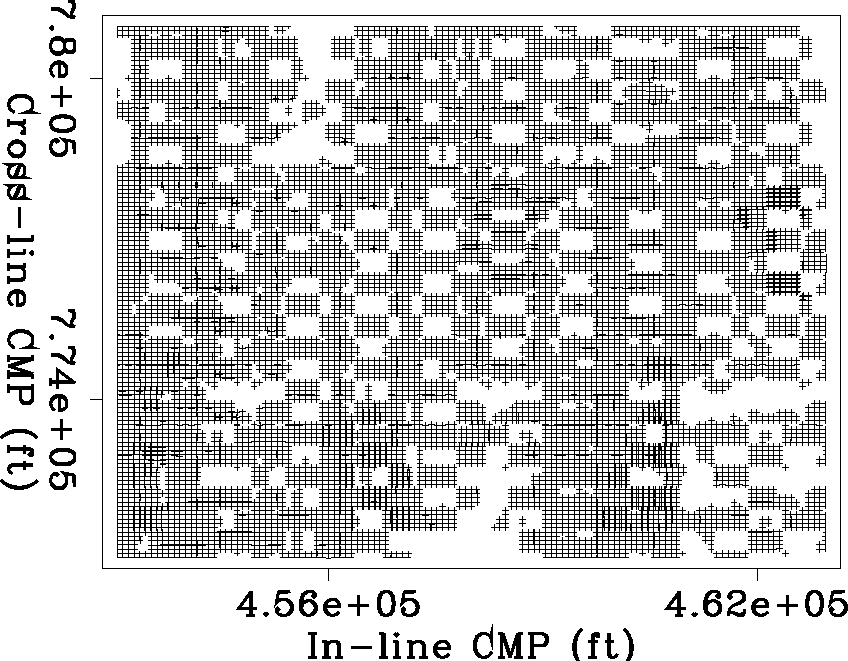 |
Figure 2 CMP geometry of a subset from a wide azimuth 3-D land survey.
We propose applying the AMO operator Biondi and Chemingui (1994a); Fomel and Biondi (1995a) to project irregular 3-D surveys with wide azimuthal coverage onto a regular midpoint-offset subsets with a common source-receiver azimuth. The resulting regular geometry lends itself handily to other processing algorithms that require regular grids. An example of an irregularly sampled subset of a 3-D wide-azimuth data is shown in Figure 2. Traces whose source-receiver offset is between 7000 and 9000 ft and azimuth between -30o and 30o were extracted from a true 3-D land survey and we plotted the surface locations of their common mid-points.
In the next section, we discuss the 3-D land data and its acquisition geometry. We show how we can use the real data example to generate numerical simulations and apply our technique to process a synthetic reflectivity model.
 |